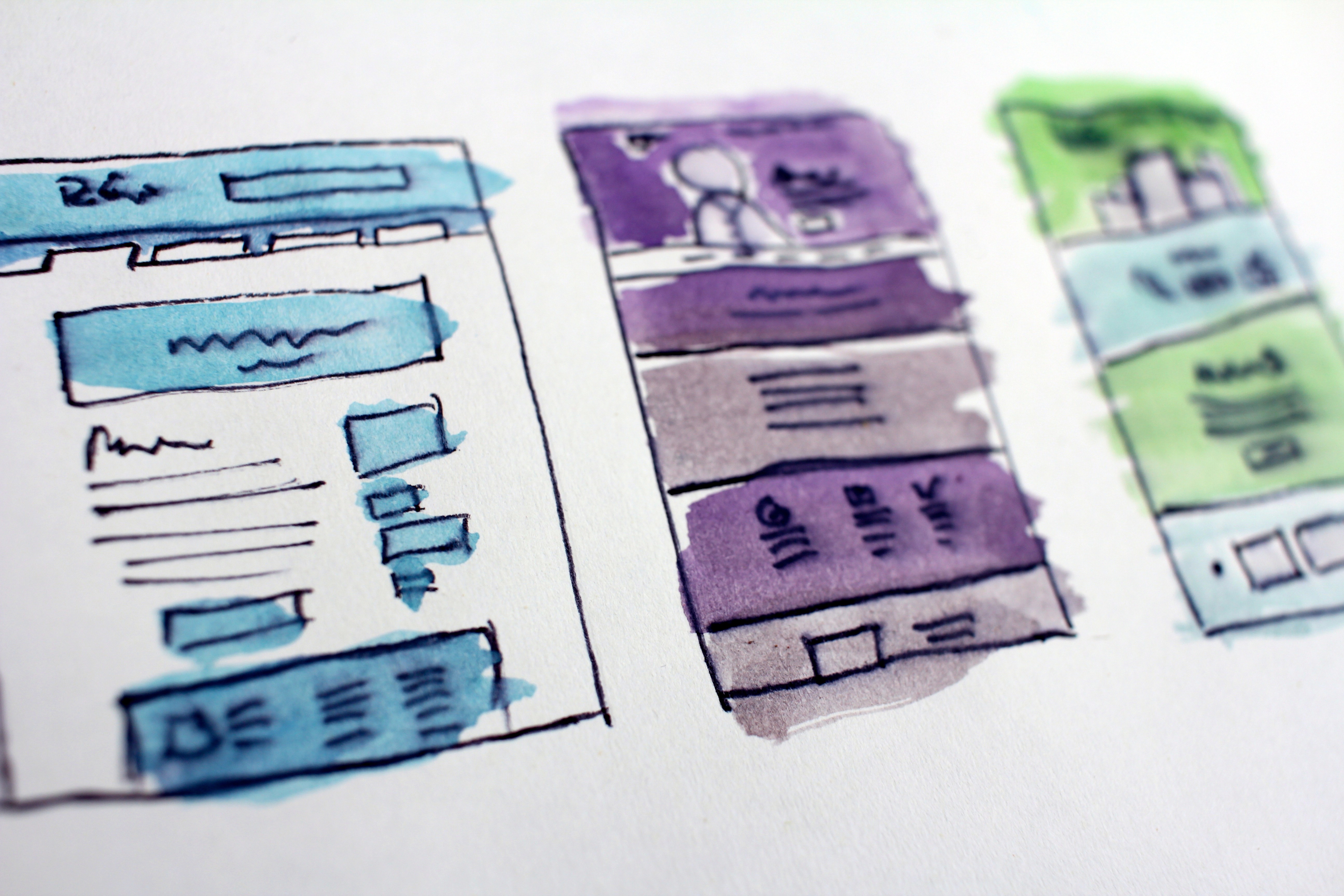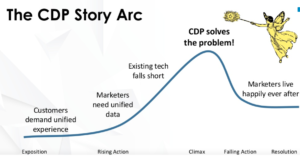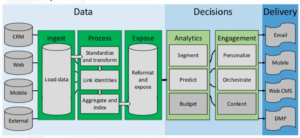
Getting Past the Hype About Customer Data Platforms (CDPs)
In today’s experience-driven, digital world your customers demand that you know who they are, what they’ve done and what they want across all channels. They demand a unified customer experience. However, this is impossible without unified customer data. But with data in disparate systems across your organization, it’s difficult to unify customer profiles and meet customer expectations.
A customer data platform (CDP) is packaged software that creates a persistent, unified customer database that is accessible to other systems. Ultimately, CDPs fit in the middle of the martech stack and are the conduit to delivering this unified customer experience.

At the recent MarTech Conference in Boston, David Raab from the Customer Data Platform Institute and Raab Associates dispelled the myths and highlighted the realities of CDPs.
Raab presented the CDP story and likened the rise of CDPs to a fairy tale. The story begins with customers demanding a unified experience. To give them this experience, marketers need unified data but the existing tech stack falls short – enter in the CDP to solve the problem. With the implementation of a CDP marketers live happily ever after, right?
Of course, there are many advantages to a CDP. For one it’s packaged software that is prebuilt and has a low risk and lower cost than building something yourself. It also creates a unified, persistent customer database where all sources of first and third party data (identified and anonymous) are organized around a customer view. And moreover, it is accessible with other systems so it’s easy to share data and change systems without disruption.
But, as Raab mentioned, fairy tales are for children and despite all the advantages, no one CDP is perfect and it won’t solve all your problems. Here are some myths and realities to consider if you are evaluating adding a CDP to your martech stack.
Customers demand a unified experience.
Myth: The purpose of a CDP is to coordinate the customer experience across channels.
Reality: Most common CDP application is analytics, which leads to single-channel personalization.
Myth: A CDPs value depends on connecting all the systems.
Reality: Many use cases work with a few systems or even just one.
Marketers need unified data.
Myth: CDPs are for marketing only.
Reality: All customer-facing departments can benefit.
Myth: CDPs manage first-party data only.
Reality: Many CDPs use third-party and anonymous data.
Myth: CDPs work only with data they’ve ingested.
Reality: (Some) CDPs can also access data from external systems in real time.
Existing tech falls short.
Myth: CDPs is a new technology.
Reality: CDP is (mostly) a packaging of existing technology.
Myth: You don’t need a CDP if you have a Data Warehouse.
Reality: CDPs include unstructured data not usually found in a Data Warehouse.
Myth: You don’t need a CDP if you have a Data Lake.
Reality: CDPs provide more data preparation than a typical Data Lake.
Myth: Stand-alone CDPs are the only way to create unified customer data.
Reality: Other solutions do exist. The CDP is a function as well as a type of system.
A CDP solves the problem.
Myth: CDPs are all the same.
Reality: CDPs vary widely in scope and vertical specialty.
Myth: Many random vendors call themselves CDPs.
Reality: The CDP market is forming segments by size, scope and industry.
Myth: CDPs have no shared features.
Reality: All CDPs ingest and retain full detail, create unified customer profiles and expose the results.
Myth: Identity resolution is a core CDP capability.
Reality: Some CDPs offer integrated ID resolution, some rely on third-party systems and some expect IDs to be provided on inputs.
Marketers live happily ever after
Myth: CDPs replace application data stores.
Reality: CDPs synch with application data stores.
Myth: CDPs don’t need IT support.
Reality: IT still needs to be involved and should be. Vendors will do some tech work but IT owns and understands the data so they need to be a part of the process.
Myth: A CDP is a silver bullet that solves all customer data problems.
Reality: Even if you implement a CDP your organization, budget, skills, time and existing systems can all be major obstacles.

Yes, there’s hype but CDPs do offer real value. Identifying the right CDP for your organization is the first step in getting the process started. Carefully vetting potential vendors, evaluating use cases, asking for references and proof of concept as well as detailed deployment plans can help you succeed in your CDP selection process.
For more information about CDPs as well as a directory of potential CDP providers, visit the cdpinstitute.org.



Leave a Comment
You must be logged in to post a comment.